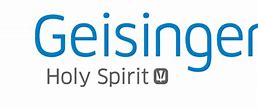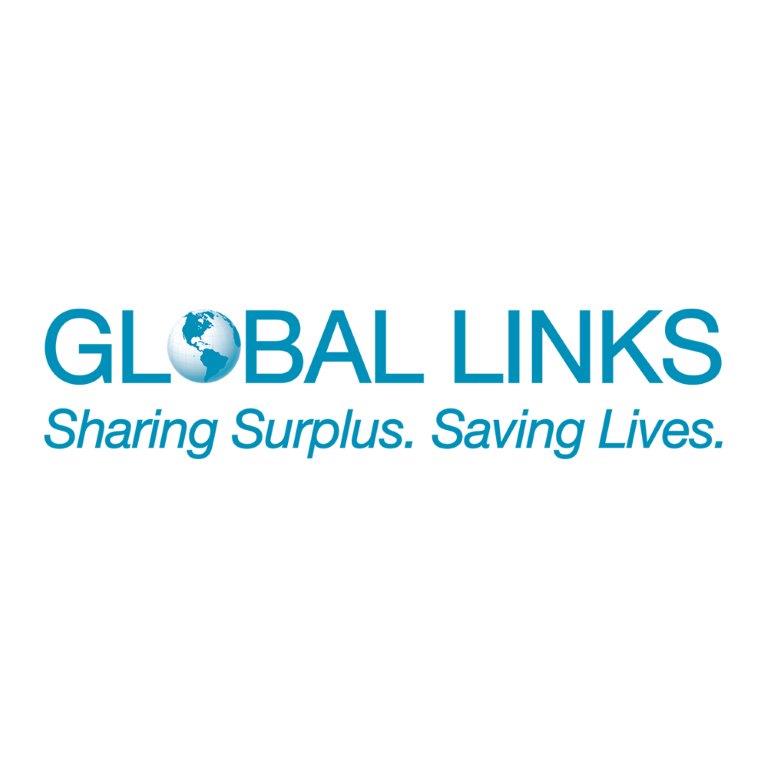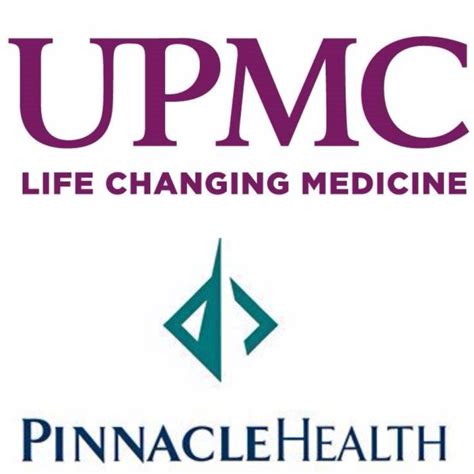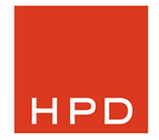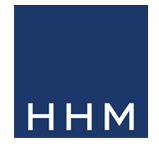Haiti 2015 – Full Report
Report on Haiti Mission October 21, 2015 to November 4, 2015
This was the sixth trip for this team to Hospital Pierre Payen (HPP) and the third time under the sponsorship of Operation Medical. The initial three trips followed the earthquake of 2010 and run the sponsorship of the Carlisle Presbytery. Team members were largely from the Harrisburg area for the first three missions but for this mission and the previous two missions, there was a large contingent from the New Hampshire area under the leadership of Dr. Jeffrey Segil. In previous years, the teams have arrived on Saturday or Sunday and left on a Saturday or Sunday. This year, however, we had a slightly different schedule-arriving on Wednesday, October 21 and a parting on Wednesday, November 4. This was to allow time for set up of the operating room, cleaning as necessary, and to begin seeing patients in clinic. The bulk of the surgery would be done during the week of October 24 to October 31 when the full team would be in place. The days after October 31 were designed to finish up any surgery that had not been accommodated during the previous week, to be certain that all surgical patients were in good condition or discharged, and to make certain that the hospital and operating room were in good condition for the next team. As discussed below, this was somewhat helpful but, in the future, we will most likely revert to the weekend arrival and departure.
On October 21, 2015, the following team members arrived at HPP and departed on Nov. 4.
Linda Brindle, RN, Charmaine Garner, RN, Chip Goodhart, CRNA, John Judson, MD (Team leader, Gen Surg.), John Reidell, MD (General Surgery), Jen Stoner, PharmD
On Saturday, October 24, the following team members arrived and departed on Saturday, October 31. Their flight arrived approximately TWO hours late.
Patricia Crothers, M. S. N., Nurse Practitioner, Sarah Crothers, RN, (ICU & PACU experience), Chelsea Eugley, Surgical Technician, Tabitha Gagnon, Ultrasound Technician, Suzanne B. Harris, Sterile processing and surgical assistant, 6. Adam Kramer, Fourth year medical student, Jenna Mirabelle, RN, (Circulating and scrub nurse; surgical assistant), Alix Tan Segil, High School student, Jeff Segil, MD, MS, FACOG, (GYN surgeon), Gerri Shettle, Laboratory and operating room, Nikki Stocker, Laboratory and operating room procedures, Kim Roderick, CRNA student at Hamot Medical Center.
On October 21 the group arrived one hour late. Edgard and Steve Mossburg were there to meet us. There were no issues with travel for in the airport including customs. As usual, we were besieged by porters wanting to help us with our luggage. Fortunately, we had a luggage cart and could manage without too much help. I rode in the car driven by Steve and was seated directly behind him. We were stopped at a police barricade for inspection of papers (probably because the vehicle was loaded with white faces and had lots of suitcases in the back). The paperwork was in order but the police officer then looked around the inside of the car and noted that I was not wearing a seatbelt. Apparently, there was now law that seatbelts must be worn and Steve had neither informed us of this law nor checked to see that everyone was wearing belts. The police officer use this is a great way to get a little cash. First he said they would have to keep Steve’s license and that Steve would have to come into Port-au-Prince and pay the $60 fine. This would’ve been grossly inconvenient. Edgard then got involved and the police officer “kindly agreed” to accept the $60 and take it to Port-au-Prince. I’m sure the money went into his pocket but Steve got his license back and, later, I reimbursed Steve for the $60. In Haiti this sort of thing is just the price of doing business. The rest of the trip was uneventful. We found the guest house to be clean. The staff was happy to see us again. The men went to the rooms upstairs. There were two such rooms, each with 6-8 bunk beds (sleep 12 to 16 people max). Chip, John R, and I settled into one of the rooms. Edgard, who was the person in charge of the guest house in all previous years has now become a full-time missionary with the Church Of God and resides in Borel. The supervision of the guest house was now in the hands of Chad and Dawn Aglar who are real newcomers. They had arrived only the day before and spoke no Creole. Their missionary internship ended in mid-December and, since returning to the US, decided not to return to Haiti for future work.
Following arrival on the afternoon of October 21, suitcases were unloaded in the hospital and the operating room and supply room were inspected. It was obvious that there was a lot of work to be done prior to the main week of surgery beginning on October 26. Some of this work started on the evening of October 21. Three translators (Thesto, Simeone, Marceline) were hired on the following day at $20 per day, the operating room was thoroughly cleaned, supplies where organized in the operating room work area and the unpacking of the 14 suitcases at the team had brought was begun. Again, we found that there were problems with the large autoclave. The clinic was very busy. The doctors at Hospital Pierre Payen (HPP), working throughout the year, and let their patients know that the team would be arriving. Activities were similar following day, Friday, October 23. By the end of that day, I had seen 50 patients in the clinic and eight surgical procedures had been completed. One of the surgical procedures was done by ophthalmologist Dr. Purdy in the minor room. It was a long case involving growths around the eyes of a child. One of the other cases was an emergency incarcerated hernia which I saw in the clinic on Thursday was taken to the operating room I Dr. Reidel later that afternoon. He did this despite the fact that he arrived with an upper respiratory infection associated with a great deal of, coughing, and congestion. Another case was that of Eddy Joseph who had an egg -sized mass in the umbilical area. This was biopsied and later shown to be a sarcoma. Hopefully it was totally removed by the next team to whom I had sent the pathology report.
Thursday evening, Chip and I went to Moulin Sur Mer (MSM), to visit with and say goodbye to Dr. Purdy who is leaving the following day. Late Friday afternoon the team went to MSN spend the night and Saturday. This was very pleasant and a good break. At 1 PM on Saturday, Maurice stopped by MSM and pick me up in the big truck (with two couches in the back) to go to Port-au-Prince to get the rest of the team from the airport. The plane was scheduled to arrive at three but was late by 2-3 hours. We were on the way to the airport when we got this information. Therefore, Maurice and I decided to have an early dinner. There is a National gas station close to the airport with a little restaurant but it was closed. Just around the corner from the gas station, however, there is a hotel called La Maison which had a very nice air-conditioned dining room. We both had an excellent meal of curried goat. At the airport, by bribing three policemen and two airport employees (total 1500 gourds = $30 US), I was able to get into the carousel area to help the rest of the team get through customs. This turned out to be useful because the team was questioned about medications and were beginning to open suitcases. A bystander offered “to help” because he thought I was a pastor. With his help, no suitcases were opened and we were moved right through customs (another 500 gourds = slightly less than$10 US).
On Saturday, at the hospital, new air-conditioners were installed in the operating rooms and the generator which he had been required to rent since the old ones were no longer working was put into operation. Despite this, the large autoclave did not work. With the whole team in place, it’s been a great deal of time on Sunday preparing packs for surgical procedures in the coming week.
On Monday, October 26, we hired three more translators (Loveline, Sydney, and Edna). Loveline had a unique job-she was to assist Alix Segil with her study of patient access in the HPP area. Hopefully, this will become a part of this report. One of the issues that came up with the translators was lunch. Chad and Dawn, being newcomers, did not quite understand why the translators were eating with us were suggesting that we should pay for their lunches. In the past this had not been an issue. It was always enough food and keeping the translators on site and available was extremely useful. Eventually, this got worked out when Edgard spoke to Chad and Dawn. The rest of the week was very busy with gynecological as well as general surgical cases. Our busiest day was Thur. October 28, with a total of 10 major surgical procedures.
One of the major steps forward on Tuesday was that Patty Crothers began working in the surgery clinic. It soon became apparent that she was in a much better position to do so than one of the surgeons due to a background in general medicine. We find that many of the patients who come to our surgery clinic really have medical problems. She was in a much better position to manage these patients and, for the surgical patients, she simply let one of the surgeons know. In obvious cases, she simply added them to the surgical list but if there were any questions they were examined by a surgeon. This worked extremely well. In the future, the surgery clinic should be mainly staffed by a person like Patty or a primary care physician with easy access to one of the surgical staff as needed.
Incoming patients were required by the hospital to have screening tests for HIV and RPR. This was done in the administration building before the patients came to the clinic. Although this was a good thing, it did delay patient arrival in the clinic but the surgical patients were generally available between 815 and 8:45 AM. Sarah Crothers, working with one of the translators at the front door took a lead role in identifying the patient’s coming for surgery, getting them into the ward, getting an IV started in a timely fashion. This was another major upgrade this year-having a nurse and translator working together with the preoperative process. This should definitely be continued. Sarah also took the initiative to put together a beautiful photo book which many of us have been able to purchase.
Having Tabitha Gagnon with us doing ultrasound procedures was a major help. She was able to do a wide variety of studies despite the equipment’s limitations. These were very helpful for abdominal valuation breast examination and for some talk soft-tissue examinations. Obviously, her exams are critically important for the gynecological cases but also extremely helpful in some general surgery cases.
The team met at 7 AM each morning for brief prayer, discussion of the past day’s events, and planning for the coming day. Some ate breakfast before this meeting some ate afterwards but everyone got to the hospital around 8 AM. Chip Goodhart, our anesthetist on every trip over the past six years and longtime participant in many other Haitian surgical teams, aided by Kim Roderick, an extremely capable CRNA student at Hamot Medical Center, did terrific jobs in cases moving in the operating room and also kept a relatively accurate list of the surgical procedures done in the operating room. There were some minor cases under local anesthesia which did not appear on this list. Their list will be attached to this report. Charmaine Gardner, Sue Harris, Linda Brindle, Jenna Mirabelle, Chelsea Eugley, Jen Stoner, Nikki Stocker, and Gerri Shettle provided tremendous service in the operating room preparing instruments, sterilizing trays, serving as scrub/circulating nurses, and making sure that patients were properly identified and safely managed in the operating room. Over and above all of this, they cleaned the work room on arrival, reorganized the supplies, and made absolutely certain that the operating rooms and work area was in much better shape when we left. In addition, Jen Stoner did a pharmaceutical inventory and managed any issues we had with the pharmacy. Nikki Stocker and Gerri Shettle also performed all of the necessary laboratory studies for patients undergoing surgery. Alix Segil, a high school student, was our true “Jack of All Trades” providing help wherever needed, taking pictures, etc. Having her with us was a real plus for the entire team. The principal surgeons, Dr. Reiddell (general surgery) and Dr. Segil (gynecology) were busy every day while they were at the hospital. Dr. Judson did some surgical procedures and assisted on many others. All surgeons also spent some time in the clinic and Dr. Judson spent a significant amount of his time with administrative issues. Adam Kramer, a fourth-year medical student who is very interested in gynecology, spent some time in the operating room but was critically important in terms of running the gynecology clinic. Many of these team members had not met until they came to Haiti but quickly became a very well organized and dedicated team. Everyone helped with any task that needed to be done with smiles on their faces.
There were serious attempts to keep logs of the name, age, and surgical problem of all patients seen in the clinics. The crowding and confusion in the clinics as well as the workload for the medical providers made having complete records and possible. The same was true in the operating room. The anesthetists kept track of the surgical procedures on an iPad but there were some that escaped detection because they were relatively minor and were done exclusively with local anesthesia. Based on the records available, it appears that approximately 125-150 patients were seen in surgery clinic and about 100 patients in gynecology clinic-a total of 225-250 patients seen in consultation. Many of the patients seen in surgical consultation required services unavailable at HPP for needed specialized services coming with future teams. These were all scheduled appropriately and given appointments so that they could be seen when the other specialists arrived later in November. Their charts were held and delivered to the team which was scheduled to arrive on November 14. Based on the records maintained in the operating room, it appears that 45-55 surgical procedures were completed. Having the second operating room was essential for the performance of relatively minor cases. There were approximately 60-100 ultrasound studies completed. These were absolutely essential for patient management and preoperative preparation especially for gynecological cases.
After the last cases were finished on Friday, October 30, the team loaded the luggage for those who had come to HPP on October 24 on to the large truck. Everyone was then transported to Moulin Sur Mer, a local beach resort. We had a wonderful evening debriefing and resting. On Saturday morning, October 31, the 12 team members who arrived on October 24 returned to the States while the rest of the team spent an additional night at the resort.
Moulin Sur Mer is a resort that we have routinely used over the years. On this particular trip, Chip Goodhart and Jen Stoner went to Kalico Beach resort which is 15-20 miles closer to Port-au-Prince for diving. They reported that this resort has been recently remodeled and has excellent facilities. By contrast, Moulin Sur Mer seems to be deteriorating. There are numerous problems with Internet service (not only this trip but also with a group who were there in January 2016) and the food was OK but things like the breakfast buffet are now not served on a daily basis. As indicated below, we will try another resort for the next trip.
There were two major infrastructure problems. Both were ongoing issues. Electrical supply issues have been present for some time but, the time of this visit, where critical due to the fact that one of the generators failed in the other one was inadequate to provide power to both the medical clinic and the hospital. Accordingly, HPP had to rent a large generator to provide power to the hospital including the autoclaves and the air-conditioners in the operating room. At the time of this visit, there was a grant pending to purchase new generators. As of this writing it appears that grant request will be refused. A fundraising effort will be required to at least replace the large generator near the hospital. Unfortunately, the Gettinge autoclave continues to be problematic. Some of this is related to the lack of ongoing maintenance and to the fact that there are no biomedical technicians in Haiti who are familiar with that particular type of autoclave. We were able to identify some of the problems and to discuss these with the Gettinge representative in Sweden as well as with Dave Ingram who will be coming on November 14 with the Joe Miller team. I received word after that team arrived that they had successfully repair the machine. A preventative maintenance program and/or a second autoclave (known to Haitian biomedical technicians and, perhaps, even made in Haiti) are needed.
We found the guest house to be clean and comfortable. The upper floor now has two rooms each of which have six bunk beds thus allowing for potential of 12 people per room. The bunk beds are very close together and there is only one bathroom per room. Four-six people per room is much more realistic. The three lower level rooms have six beds, five beds, and four beds each. There are three bathrooms on the lower level. It appears, therefore, that the maximum bed capacity on the first floor is 15 if every that is filled and somewhere between eight and 12 on the upper level. The upper level could hold an additional 12 if all beds were filled but as described above, this would be very uncomfortable. Furthermore infrastructure realities such as the number of cooks and plumbing capacity suggest that maximum team size at any given time be limited to 23-25. The management of the guest house was as good as could be expected given the very limited tenure of the guest house managers (see above). The Internet was available most of the time but there were issues with power outage which stopped the Internet. The rooftop area remains a popular for people to meet in the evening for discussions of a wide range of topics.
We also noted an ongoing hospital issues. The patients who come to the hospital for surgical gynecological consultation are given a completely new chart even if they are long-term patients at the HPP medical clinic. The dossier from the medical clinic does not accompany them for the specialty consultation. This is a serious problem because the visiting specialists are never aware of past medical history and the Haitian physicians who work all year in the medical clinic have no access for no information to the care provided by the specialty teams at the hospital. The hospital record completed by the medical/surgical specialists also seems to disappear after the teams leave Haiti. Thus, when subsequent teams arrive and patients return with need for surgical follow-up, there is no way to determine what was done for them in the past. A classic example was patient Eddie Joseph who presented to this team with an egg -sized mass in his umbilicus. He had undergone two previous surgical procedures at the time of other team visits during the past two years. Was also reference to a biopsy having been done. None of these records were available to us and therefore our only solution was to perform yet another biopsy and to delay treatment until that report could be put in the hands of a subsequent team. A consolidated record would’ve allowed definitive care. RECOMMENDATION: devise a system whereby patients being seen at the hospital go first to the clinic, get their record, and then come for specialty consultation. The medical/surgical specialists would make notes in the ongoing chart for the benefit of the Haitian physicians who work year-round and for the benefit of subsequent surgical teams who may have to see the patient in follow up.
There has been a significant improvement in overall hospital administration with the addition of Mr. Marc Versil. He is a well-educated Haitian gentleman who always has a smile on his face and speaks fluently in both French and English. At the time of this visit he was working part-time but, as I understand, he has been subsequently placed on full-time status. After our teams visit, he was married to Haitian lady from Port-au-Prince. They had made their new home on a nice piece of property between St. Marc and HPP. The contract with OSOPO which has been in effect for the last 2-3 does not seem to have produced any results other than to hire the new administrator who is working well with the visiting teams and with the Project Health Haiti staff. In general, when we arrived at the time of this visit, we found the hospital clean and also found that there appeared to be an increased number of nurses. We are increasingly dependent upon the Haitian nurses and are finding that working with them is increasingly productive. The only serious issue on the ward is a fact that the charts are not in binders and are frequently difficult to find. There is a chart rack and there are binders available. I believe one of the efforts of the surgical teams would be to work with Marc and the director of nurses to implement routine use of the binders with patient labels on each chart.
PLANS FOR THIS TEAM’S NEXT VISIT: The next visit of this team to HPP is scheduled for October 15 to October 30, 2016. At the present time, we have several interested people including Jeff Segil (gynecology), Chip Goodhart (CRNA), John Reiddell (general surgery), John Judson (team leader), Emerson Knight (urology), a second CRNA with whom Jeff Siegel is in contact, and one or two operating room nurses with whom Chip is in contact. Tentative plans include concentrating on gynecology and general surgery during the first week and urology with general surgery during the second week. Many of the gynecology cases include urological issues so that we are hoping our urologist can be there for both weeks. We definitely need our nursing staff, another general surgeon, an anesthesiologist or another CRNA. The guest house capacity is approximately 39 if all beds are filled. As described above, this would represent severe crowding in the upper level as well as burdens on the guest house staff and infrastructure. For our team, a maximum number at any given time should be 23-27 in deference to the close quarters on the second floor and in recognition of the workload on the guest house staff as well as infrastructure limitations such as plumbing.
The reception patient’s coming for surgery at the front door I one of our team members working with the translator should definitely be done we did in 2015. Likewise, the surgery clinic and, possibly, the gynecology clinic should be staffed by an experienced nurse practitioner, physician assistant, or nurse midwife.
From a staffing standpoint, we have adequate coverage for gynecology and urology. This mission, however, will be impossible without another general surgeon in both weeks. Recruiting this individual as well as additional anesthesia personnel is a priority at this time.
Our tentative plans for the end of the first week include leaving HPP early afternoon on Friday, October 21, spending the night in Borel, touring Hospital Albert Schweitzer, which is very close to the Church of God campus in Borel, and proceeding on to the University of Mirabelais Hospital (just under two hours from Borel), seeing as much of that institution as possible and then taking the back road past Sau d’Eau (very famous Haitian waterfall) and spending the afternoon and evening of Saturday, October 22, at one of the beach resorts-probably Kalico. On Sunday morning, October 23, a vehicle will take those returning to the states after one week to the airport and that same vehicle will pick up those working only during the second week. If there are second week team members who would like to participate in the tour described above, we will attempt to make arrangements for them to be picked up at the airport on Thursday, October 20.
SOME GOALS TO CONSIDER ON NEXT TRIP:
1. Working with the Haitian nursing staff to utilize chart binders for inpatients.
2. Working with Mr. Marc Versil to coordinate specialty clinic records with clinic records.
3. Spending some time with members of the Montrouis Rotary club to determine how we can coordinate better with them for community and hospital projects.
4. Greater involvement of Haitian staff (anesthesia and surgery) in our surgical cases.
5. Bring battery powered lights for the upstairs bathrooms
6. Bring or purchase locally – fans for the bedrooms
ITEMS THAT SHOULD BE BROUGHT ON NEXT TRIP (In addition to our normal list)
1. Staplers for all clinics
2. Good supply of paperclips, Manila file folders, letter size manila envelopes.
John P. Judson, M.D.
Submitted to Operation Medical on 2-18-2016



